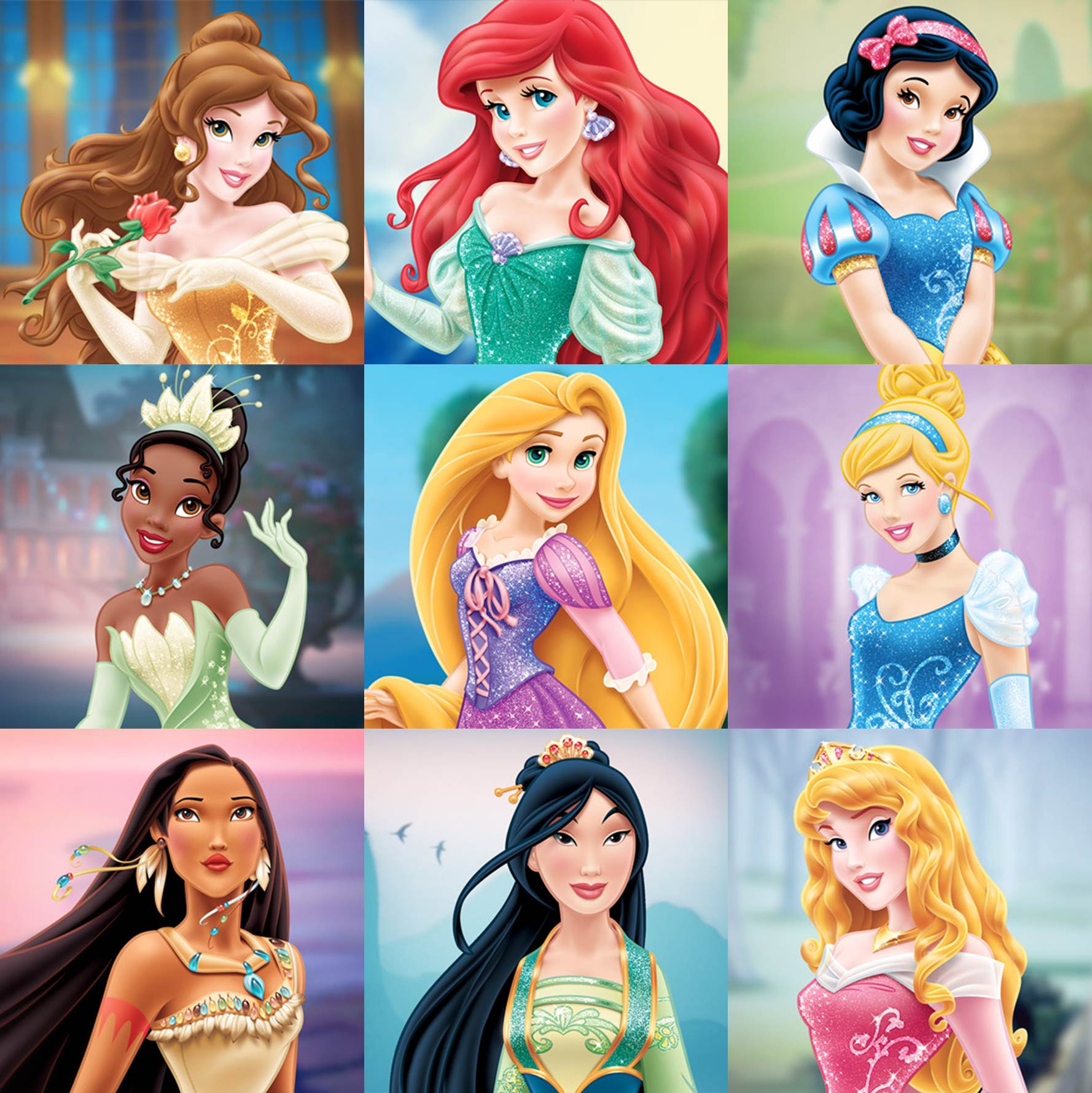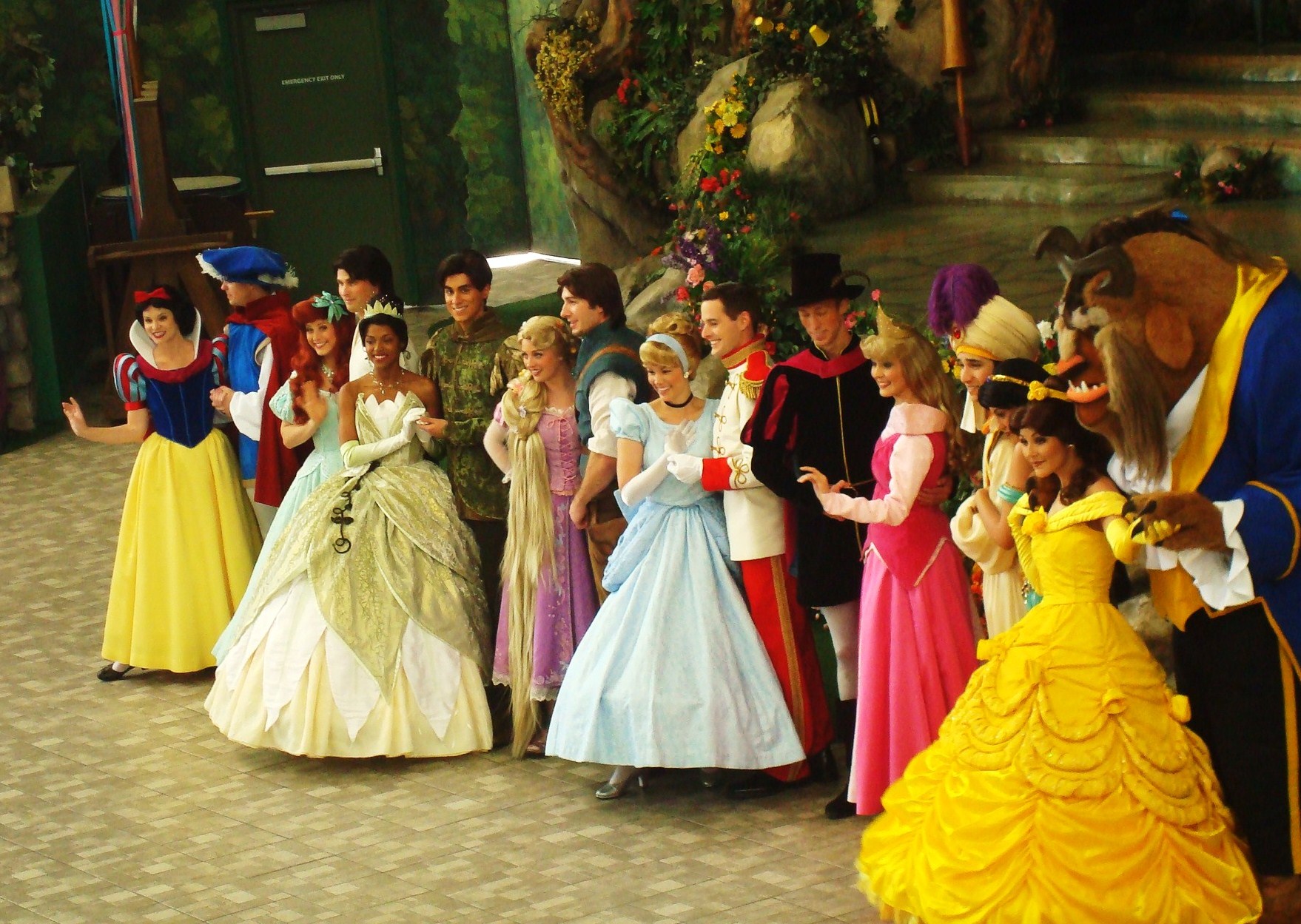Almost every little girl grows up wanting to be a Disney Princess. Why? because growing up all around them they see Disney Princess’s in different mediums. Telling the stories of Disney princess’s is inevitable especially in the American tradition. The stories being told are ultimately suppose to be a reflection of the standards of American male and female roles in society. From Snow White to Tianna, all of the princess’s fall in love with men and are helpless at first and with the help of a male figure they identify their true worth. What makes they Disney Princess's so successful and popular is because they exercise both transmedia and multimedia.
Transmedia is telling a single story across multiple digital platforms. Multimedia is using many different mediums to sell to an audience but is not limited to just a digital form, it also doesn't have to stick to the same story. The story of "Beauty and the Beast" exercises the use of multimedia by having a film produced, a mini series, books, audio, toys, costumes, and other souvenirs. As time progressed Disney adapted to the use of transmedia by taking this one story and producing on as many media platforms as possible. The film was re-released, there was video games, computer games, dvd's, broadway production, and interactive books.
With the younger generation becoming so adapted to the idea of transmedia, it certainly helps to increase production and revenue. It is also the best marketing stratergy. Disney Princess does the best job at this because they have so much history and know exactly where to begin, and how to introduce the character and keep the character relevant. "The company creates characters and they are integrated across multiple media platforms. Let’s consider Disney Junior and the new princess, Sofia the First. Her story graced the pages of her own hardcover book and was later premiered on the Disney Junior channel in November 2012. There was a Facebook page and Disney Junior even held a “Sofia the First Twitter Contest” which presented the winner with a $1000 royal shopping spree in honor of Sofia. As a way of integrating her into the theme parks, she will be making her way to the Disney Junior Live on Stage at Disney’s Hollywood Studios some time this year (or at least that is what cast members told me in December). Disney Junior even extends their storytelling through mobile apps, online games, and online stories." (Natasachajc.wordpress.com) Giving people access to their favorite princess, all the time and as easy as possible is the best way to make money. Disney Princess's are aimed for the younger crowd. However we know that in order for the products to sell via transmedia then it also has to attract the adults. Disney does a good job of this by including social media as a way for consumers to interact. They also have computer games, and interactive websites for children to constantly engage with their princess. The younger generation certainly has a high expectation when it comes to how their story will unfold and how many platforms it will be available as.


By Disney having all these ways for the consumers to interact this engages participation. It makes it so hard for the consumers to not engage, because their story is al around them. When you make it easy for people to interact they often time abuse it. With the height of technology, it makes it just that much easier for Disney to make their content available. In the average household there is some type of digital device, if not every room in the household. "Technology has created tools that allow the user to interact and gamify content as never before (location-based, virtual goods, augmented reality, QR codes, etc). Fans’ familiarity with and desire to experience TV content across devices other than TV has exploded." (http://mashable.com/2011/11/17/transmedia-tv/). Games and other devices that allow the consumer to interact is the best way for the consumer to stay up to date.
Like I mentioned before it makes it almost impossible for consumers to not engage in the evolution of transmedia. " ... there are strong economic motives behind transmedia storytelling. Media convergence makes the flow of content across multiple media platforms inevitable. In the era of digital effects and high resolution game graphics, the game world can now look almost exactly like the film world- because they are reusing many of the same digital assets." (Convergence culture, where old and new media collide, Henry Jenkins, 106) Disney has mastered the concept that ultimately the entertainment and marketing world wants to work hand in hand, to gain the most profit. By creating strong emotional attachment with the fan and the character, this would lead to ever lasting sales. There will always be room to continue to market via transmedia.
Various platforms in many ways benefits the audience. More is always better in a sense that if more is offered to the audience a fan will embrace it and for those who think one is enough they will also have the opportunity to not take part in whatever else is produced. It is a win/win situation. I don't think multiple platforms will change the core of the story. Like the Disney Princess stories, they are possibly on every platform, yet the story line is very consistent and the image is consistent as well.
Book on Disney Princess and Transmedia here
Convergence Culture, Henry Jenkins




Shardae,
ReplyDeleteI really liked how you connected Disney princesses to transmedia storytelling. Disney is probably one of the biggest, if not the biggest conglomerate that uses transmedia storytelling on all of its brands. The use of social media such as Instagram and Twitter and video games, as well as films, the story book stories of these Disney princesses have gained more fans and consumers in the market. WHICH IS PRETTY AWESOME!
Good job, best friend. <3